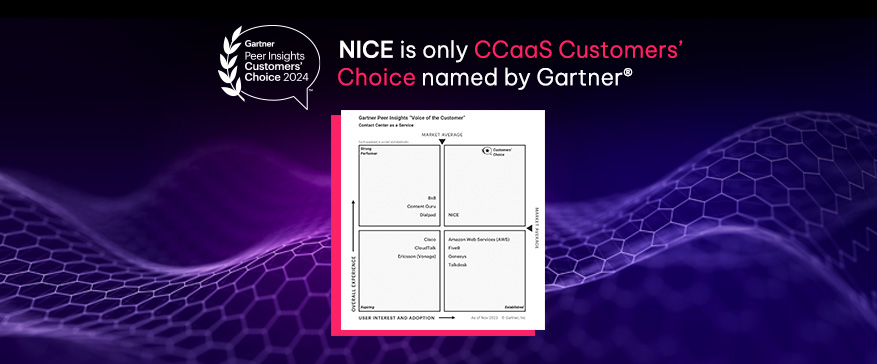Quality Management Contact Center
Call center quality management in a contact center encompasses the processes and strategies aimed at ensuring customer interactions are handled efficiently and effectively. It involves the continuous monitoring and evaluation of customer interactions, identifying areas for improvement, and implementing measures to enhance customer satisfaction.
Grasping the concept of quality management is vital for maintaining high service standards and meeting customer expectations. It plays a pivotal role in enhancing customer experience, building customer loyalty, and driving business growth.
This article delves into the importance of quality management in a contact center, discusses the essentials for effective quality assurance, examines various approaches to quality monitoring, highlights the latest trends in contact center quality management, and outlines the benefits it brings to a contact center.
Understanding Quality Management
Quality management in a contact center is crucial for ensuring customer satisfaction and maintaining high service standards. It involves a systematic approach to monitoring, evaluating, and improving the quality of customer interactions and overall operational performance.
The key principles of quality management in a contact center include:
- Consistency: Ensuring all customer interactions adhere to established standards and guidelines.
- Continuous Improvement: Regularly evaluating performance and implementing strategies to enhance efficiency and effectiveness.
- Customer Focus: Prioritizing the needs and expectations of customers to deliver exceptional experiences.
- Employee Engagement: Involving and empowering employees to take ownership of quality management processes. Empowering call center agents to take ownership of quality management processes is essential for improving productivity and reducing agent churn.
The objectives of quality management in a contact center are multifaceted. Firstly, it aims to enhance customer satisfaction by ensuring consistent and exceptional service delivery. By monitoring interactions, identifying areas for improvement, and providing feedback, quality management helps organizations address customer concerns promptly and effectively.
Secondly, quality management plays a crucial role in improving operational efficiency. By analyzing performance metrics and identifying bottlenecks or areas of inefficiency, contact centers can streamline processes, optimize resource allocation, and reduce costs. Key performance indicators are vital in this process as they help measure and evaluate call center performance.
Lastly, quality management enables contact centers to meet regulatory requirements and industry standards. By adhering to compliance guidelines, organizations can mitigate risks, maintain data security, and protect customer privacy.
By implementing effective quality management practices, contact centers can not only meet customer expectations but exceed them. It fosters a culture of continuous improvement, empowers employees, and drives customer loyalty and advocacy.
Importance of Quality Management in a Contact Center
Quality management is a crucial aspect of running a successful contact center. By implementing effective quality management practices, organizations can ensure that their customer interactions meet the highest standards of excellence. Let’s explore the key benefits of implementing quality management practices, the impact it has on agent performance and retention, and how it contributes to overall business success.
One of the primary benefits of implementing quality management practices in a contact center is the ability to identify and rectify any service gaps or inconsistencies. By monitoring and evaluating customer interactions, organizations can identify areas for improvement and take proactive measures to enhance the quality of their services. Call center quality assurance processes help in evaluating and improving the quality of customer service interactions by implementing best practices, establishing frameworks, and using technology such as automated QA tools. This not only leads to more satisfied customers but also helps in building a strong reputation in the market.
Quality management also plays a significant role in boosting agent performance and retention. When agents receive regular feedback and coaching on their performance, they are better equipped to deliver exceptional customer service. This leads to increased job satisfaction, improved morale, and reduced employee turnover. By investing in their agents’ development, contact centers can create a positive work environment that fosters loyalty and productivity.
Furthermore, quality management contributes to the overall success of the business. By consistently delivering high-quality customer experiences, organizations can differentiate themselves from competitors and build a loyal customer base. Satisfied customers are more likely to become brand advocates, recommending the contact center’s services to others and contributing to business growth. Moreover, quality management helps in identifying areas where operational efficiency can be improved, leading to cost savings and increased profitability.
Essentials for Effective Quality Assurance
A quality assurance program is essential for maintaining high standards and delivering exceptional customer service in a contact center. By implementing a robust quality assurance program, organizations can ensure that their agents consistently meet customer expectations and adhere to company policies and procedures. Here are the key components of a quality assurance program:
Clearly defined quality metrics: To effectively measure agent performance, it is crucial to establish clear quality metrics that align with business goals and customer expectations. These metrics may include factors like call resolution time, customer satisfaction ratings, adherence to scripts or guidelines, and compliance with regulatory requirements. Additionally, having clear quality assurance processes in place is vital for maintaining these high standards.
Call monitoring and evaluation: Monitoring and evaluating agent interactions is a critical aspect of quality assurance. This can be done through call recording and live call monitoring, where supervisors listen to calls in real-time or review recorded conversations. By analyzing these interactions, organizations can identify areas for improvement, provide feedback to agents, and ensure consistent service delivery.
Quality assurance tools and technologies: Various tools and technologies can enhance the effectiveness of a quality assurance program. These may include speech analytics software, sentiment analysis tools, call scoring systems, and customer feedback surveys. Implementing these solutions can streamline the monitoring and evaluation process, provide valuable insights, and facilitate data-driven decision-making. Center quality management tools play a crucial role in enhancing the effectiveness of a quality assurance program by offering features like call recording, speech analytics, and quality scoring.
When it comes to monitoring and evaluating agent performance, it is essential to follow best practices. Here are some key recommendations:
Random sampling: Rather than monitoring every interaction, it is advisable to select a representative sample of calls for evaluation. This ensures a fair assessment and allows for a comprehensive analysis of agent performance.
Consistent feedback and coaching: Regular feedback and coaching sessions with agents are crucial for their professional development. Supervisors should provide constructive feedback, highlight strengths, address areas of improvement, and offer guidance on enhancing customer interactions.
Ongoing training and development: Continuous training and development programs help agents stay updated on industry trends, product knowledge, and customer service skills. By investing in their growth, organizations can enhance agent performance and deliver exceptional customer experiences.
An effective quality assurance program, supported by the right tools and best practices, is instrumental in driving customer satisfaction, improving agent performance, and ultimately, achieving business success in a contact center environment.
Approaches to Quality Monitoring
Quality monitoring is an essential aspect of managing a contact center efficiently. By monitoring the quality of interactions with customers, contact center managers can identify areas for improvement and ensure that their agents are delivering exceptional customer service. There are different methods and techniques for quality monitoring that contact centers can utilize.
One common approach to quality monitoring is call recording. This method involves recording customer interactions, such as phone calls, and reviewing them later to assess the quality of the conversation. Call recording allows managers to evaluate agent performance, identify training needs, and address any compliance issues.
Another technique for quality monitoring is live monitoring. With live monitoring, supervisors have the ability to listen in on agent-customer interactions in real-time. This approach enables immediate feedback and coaching, enhancing agent performance and customer satisfaction. Live monitoring is particularly effective for contact centers that handle sensitive or complex customer inquiries.
Speech analytics is a more advanced method of quality monitoring. By analyzing recorded conversations using speech recognition technology, contact centers can identify trends, patterns, and keywords that provide insights into customer sentiment, agent performance, and emerging issues. Speech analytics helps contact centers gain valuable business intelligence and make data-driven decisions. Additionally, call center quality management software can integrate speech analytics to provide deeper insights into customer interactions, making the job of a call center manager easier.
Each monitoring approach has its own benefits and limitations. Call recording provides a comprehensive record of customer interactions but requires time for review. Live monitoring allows for real-time intervention but may not capture the full customer experience. Speech analytics offers deep insights but requires sophisticated technology and expertise.
Choosing the right monitoring strategy for your contact center depends on your specific needs and goals. Consider factors such as the nature of your customer interactions, the size of your contact center, and the resources available. It’s important to strike a balance between effective quality monitoring and operational efficiency.
Trends in Contact Center Quality Management
As customer expectations continue to evolve and industry standards change, contact centers must stay updated with the latest trends in quality management. By embracing emerging trends and innovations, leveraging technology, and adapting to customer expectations, contact centers can ensure they are delivering exceptional customer experiences. Let’s explore some key trends in contact center quality management:
Emerging trends and innovations in quality management: Quality management practices are constantly evolving to meet the ever-changing needs of customers. Contact centers are now incorporating innovative approaches such as real-time speech analytics, sentiment analysis, and quality monitoring tools to gain deeper insights into customer interactions. These technologies enable contact centers to identify trends, detect potential issues, and proactively improve customer experiences.
The role of technology, AI, and automation in quality management: Technology, AI, and automation play a crucial role in enhancing quality management processes. With the help of advanced speech recognition, machine learning, and natural language processing, contact centers can automate quality evaluations, reduce manual effort, and ensure consistent evaluation criteria. AI-powered quality management systems can also provide personalized coaching and training recommendations based on individual agent performance. Additionally, the integration of customer relationship management (CRM) systems with quality management tools allows for the seamless flow of information, better understanding of customer interactions, and the delivery of personalized services.
Adapting to changing customer expectations and industry standards: Customer expectations are constantly evolving, and contact centers must adapt to meet these changing demands. Quality management teams are now focusing on metrics that align with customer satisfaction, such as first call resolution, average handle time, and customer feedback. Additionally, contact centers are aligning their quality management practices with industry standards like ISO 9001 and Six Sigma, ensuring they meet the highest quality benchmarks.
Benefits of Quality Management in a Contact Center
Quality management plays a crucial role in ensuring the success of a contact center. By implementing effective quality management practices, contact centers can achieve a range of benefits that positively impact both the organization and its customers.
One of the key advantages of quality management in a contact center is improved customer satisfaction and loyalty. By consistently monitoring and evaluating customer interactions, contact centers can identify areas for improvement and address customer concerns promptly. This leads to enhanced customer satisfaction, increased loyalty, and ultimately, a stronger customer base.
Additionally, quality management helps in enhancing agent performance and productivity. Through the use of performance metrics and evaluations, contact centers can identify strengths and weaknesses in agent performance. This allows them to provide targeted training and coaching, enabling agents to improve their skills and deliver better customer experiences. Quality management also plays a vital role in monitoring and enhancing the performance of center agents, ensuring compliance with industry standards and driving success through solutions like gamified performance management systems and AI-powered analytics. As a result, agents become more efficient and productive, leading to higher customer satisfaction rates.
Another significant benefit of quality management is the reduction of operational costs and increased efficiency. By identifying and addressing inefficiencies and process bottlenecks, contact centers can streamline their operations and reduce unnecessary expenses. This leads to cost savings and improved overall efficiency, allowing contact centers to allocate resources more effectively and provide better customer service.







